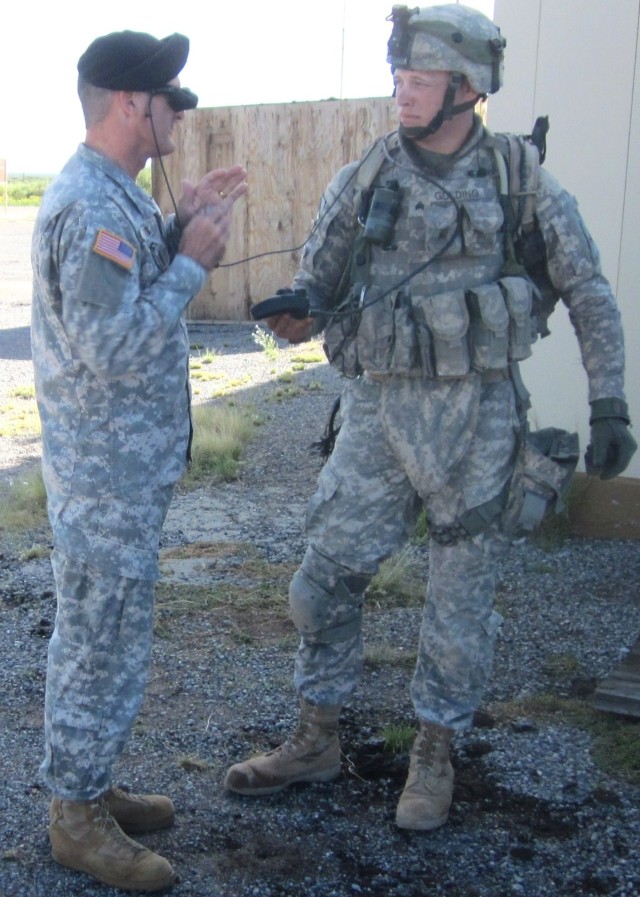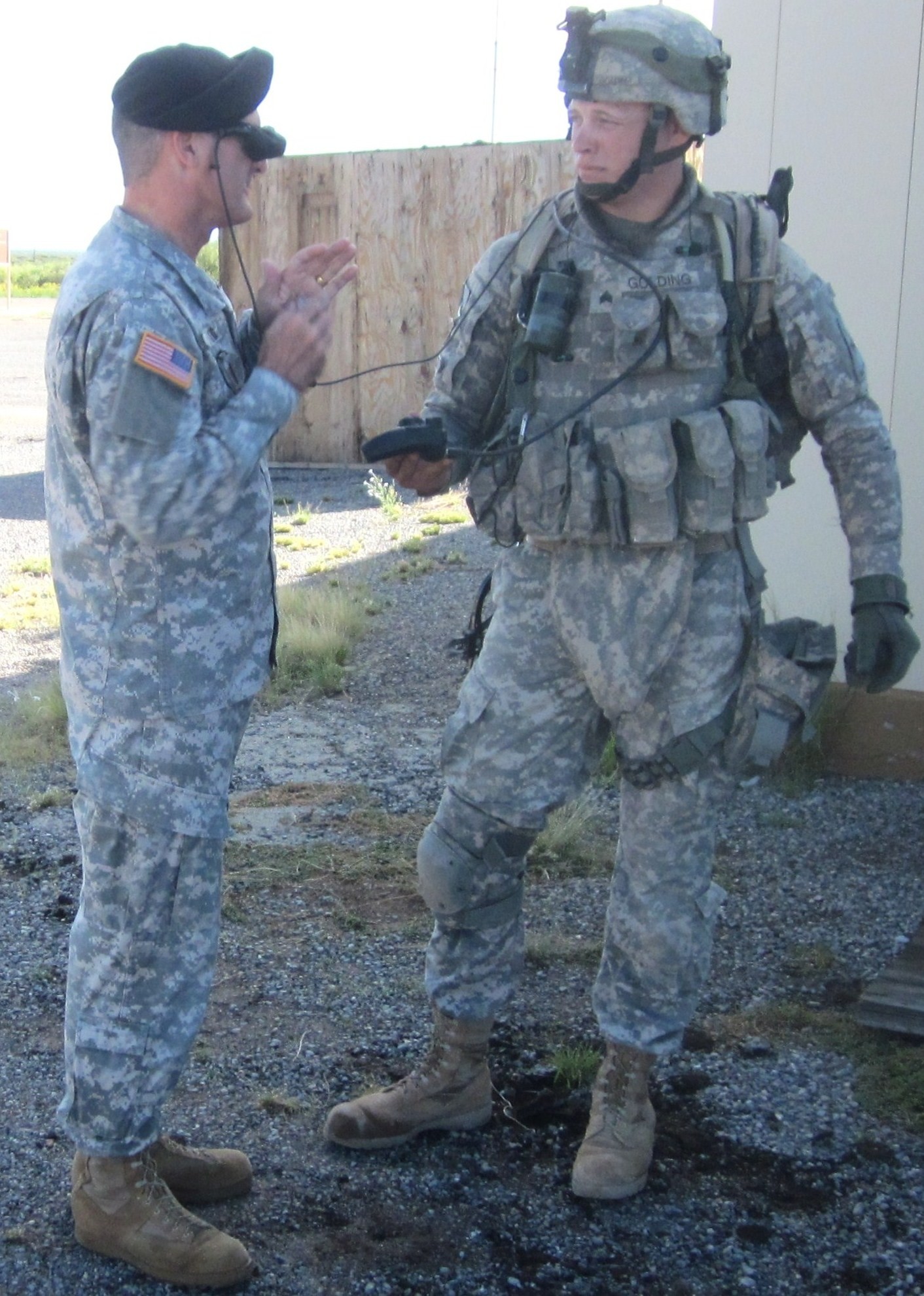Maj. Gen. Randolph P. Strong, commander of the U.S. Army Communications-Electronics Command, was among senior Army officers who observed part of the Limited User Test of Increment One of the ArmyAca,!a,,cs Early Infantry Brigade Combat Team, or E-IBCT, at White Sands Missile Range, N.M., last month.
Increment One E-IBCT capabilities form the backbone of the first Capability Package of the ArmyAca,!a,,cs BCT Modernization strategy, according to officials of the Army Evaluation Task Force and Future Force Integration Directorate conducting the test. The capabilities under evaluation as part of Increment One involve unmanned air and ground vehicles, unattended ground sensors and a network integration kit and are expected to significantly improve SoldiersAca,!a,,c knowledge of the battlefield and their ability to communicate situational awareness data.
The Limited User Test will inform defense acquisition decisions for continued low rate production as well as planning for the initial operational test of Increment One systems, the officials said.
In mid-July, a group of CECOM Central Technical Support Facility staff members played a major role in the final preparations at Fort Bliss, Texas, and White Sands for a BCT network demonstration leading up to the Limited User Test. Eight CTSF staff members worked on various facets of the demonstration at the specific request of Vice Chief of Staff of the Army Gen. Peter Chiarelli.
System of System Integration, or SoSI, and Test Branch representatives supported the AETF and Future Force Integration Directorate and Army Program Executive Offices for Integration, Aviation and Command, Control and Communications-Tactical by setting up a BCT tactical operations center, also known as TOC, by executing system initialization and analysis, and in scenario development and pilot testing for the demonstration.
According to Charles McMaster, Department of Army Chief Information Office/G-6 system-of-systems integration and interoperability engineer, Chiarelli asked for the CTSFAca,!a,,cs participation in the demonstration because of what he termed the facilityAca,!a,,cs Aca,!A"unique capabilitiesAca,!A?. Aca,!A"The CTSF,Aca,!A? he said, Aca,!A"offers the unique capabilities of network understanding, and system-of-system integration expertise and experience.Aca,!A?
Bill Bundschuh and Randy Mitchell represented the CTSF SoSI Branch during the demonstration; and David Neely of the CTSF Operations Branch was also on hand. Test Officer Ricky Rowe headed a delegation of CTSF test operators who assisted the demonstration and included Pit Boss-Senior Operator Lillian Figueroa and operators David Ayers, Chris Cox, Angela Johnson and Susan Doran.
Aca,!A"We were tasked to set up a battalion TOC,Aca,!A? Rowe explained, Aca,!A"using a mix of Software Block 2 (LandWarNet/Battle Command) systems, coupled with some very new modes of communications.Aca,!A?
Aca,!A"The purpose of the (demonstration) was to see if we could get information from the Soldiers on the ground all the way to the Global Information Grid and the battalion TOCAca,!A|and vice versa,Aca,!A? he added.
The demonstration, he explained, was structured on a full architecture aimed at testing new capabilities, including a new radio that transmits and receives on each of three different wave forms.
Aca,!A"It was really a proof of principle; to send data from one part of the battlefield to the other using new systems,Aca,!A? Rowe said.


Social Sharing